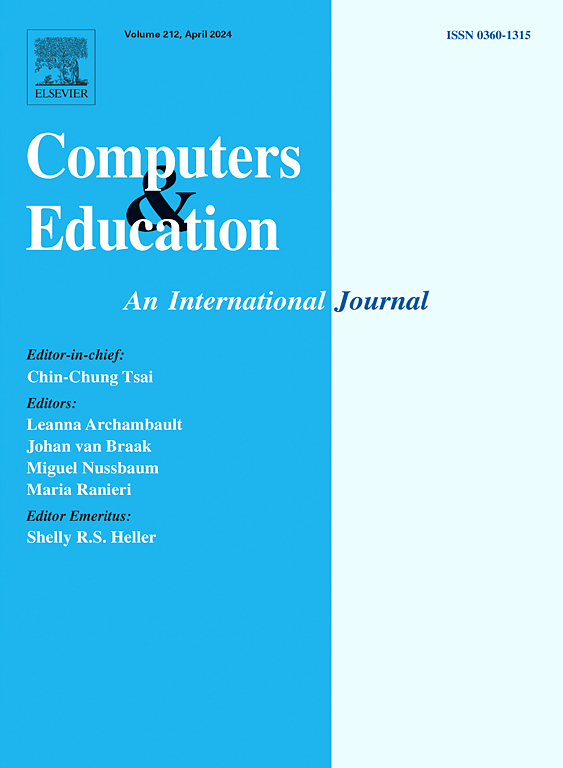学生如何参与学习分析:利用基于消息的信息访问、采取行动和学习常规,以支持协作注释
IF 10.5
1区 教育学
Q1 COMPUTER SCIENCE, INTERDISCIPLINARY APPLICATIONS
引用次数: 0
摘要
尽管人们对面向学生的学习分析越来越感兴趣,但对学生在实践中如何使用这些工具的研究却很有限。本研究探讨了在为期五周的在线本科统计课程中,学生如何使用通过电子邮件发送的基于消息的分析工具来支持他们参与协作注释任务。本研究重点关注三项关键活动(分析访问、感性认识和行动),采用了混合方法,分析了 91 名学生的分析访问和行动记录,并对 10 名学生进行了思考-朗读访谈。研究结果表明,所有周的访问率(即打开包含分析结果的电子邮件)一直很高;然而,根据与学生学习习惯和使用动机的一致性,对分析结果更实质性的参与也各不相同。学生们基于对同伴活动的好奇心而参与信息搜索,但也注意到他们对简明数据表示的渴望与对解释和评估信息所需的充分背景之间的矛盾。学生们并不总是立即、直接地根据分析结果采取行动,而是在学习行为中表现出间接的变化,例如在后来的协作任务中提高了认识并调整了行为。这些见解为学生分析使用的情境化模型提供了信息,为未来的分析设计和研究提供了指导,并表明需要扩展分析可操作性的概念。本文章由计算机程序翻译,如有差异,请以英文原文为准。
How students engage with learning analytics: Access, action-taking, and learning routines with message-based information to support collaborative annotation
Despite the growing interest in student-facing learning analytics, limited research has examined how students actually engage with these tools in practice. This study explores how students used message-based analytics sent via emails to support their engagement in collaborative annotation tasks in an online undergraduate statistics course over five weeks. Focusing on three key activities (analytic access, sensemaking, and action-taking), this study employed a mixed-methods approach, analyzing analytics access and action records from 91 students and think-aloud interviews with 10 students. Findings revealed consistently high access rates (i.e. opening an email that included analytics) across all weeks; however, more substantive engagement with the analytics varied based on alignment with students’ learning routines and motivations for use. Students engaged in information-seeking based on curiosity about peer activity but noted a tension between their desire for concise data representations and the need for sufficient context to interpret and evaluate the information. Students did not always act immediately and directly on the analytics, but instead demonstrated indirect changes in their learning behaviors, such as heightened awareness and behavioral adjustments during later collaborative tasks. These insights inform a contextualized model of student analytics use, offering guidance for future analytics design and research and suggesting the need for an expanded notion of analytic actionability.
求助全文
通过发布文献求助,成功后即可免费获取论文全文。
去求助
来源期刊

Computers & Education
工程技术-计算机:跨学科应用
CiteScore
27.10
自引率
5.80%
发文量
204
审稿时长
42 days
期刊介绍:
Computers & Education seeks to advance understanding of how digital technology can improve education by publishing high-quality research that expands both theory and practice. The journal welcomes research papers exploring the pedagogical applications of digital technology, with a focus broad enough to appeal to the wider education community.
 求助内容:
求助内容: 应助结果提醒方式:
应助结果提醒方式:


